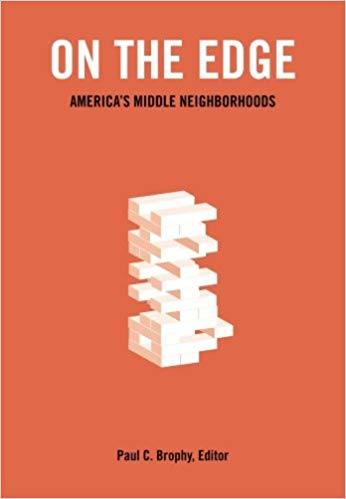
On the Edge, a new book edited by Paul C. Brophy aims to stimulate a national dialogue about middle neighborhoods and features a case study on the work of Healthy Neighborhoods, Inc. Presented through case studies and essays by leading policymakers, community development professionals, and scholars, this volume explores the complex web of neighborhoods transitioning across America.
“One way to think about middle neighborhoods is they are on the edge between growth and decline. These are neighborhoods where housing is often affordable and where the quality of life—measured by employment rates, crime rates, and public school performance—is sufficiently good that new home buyers are willing to play the odds and choose these neighborhoods over others in hopes they will improve rather than decline.”

